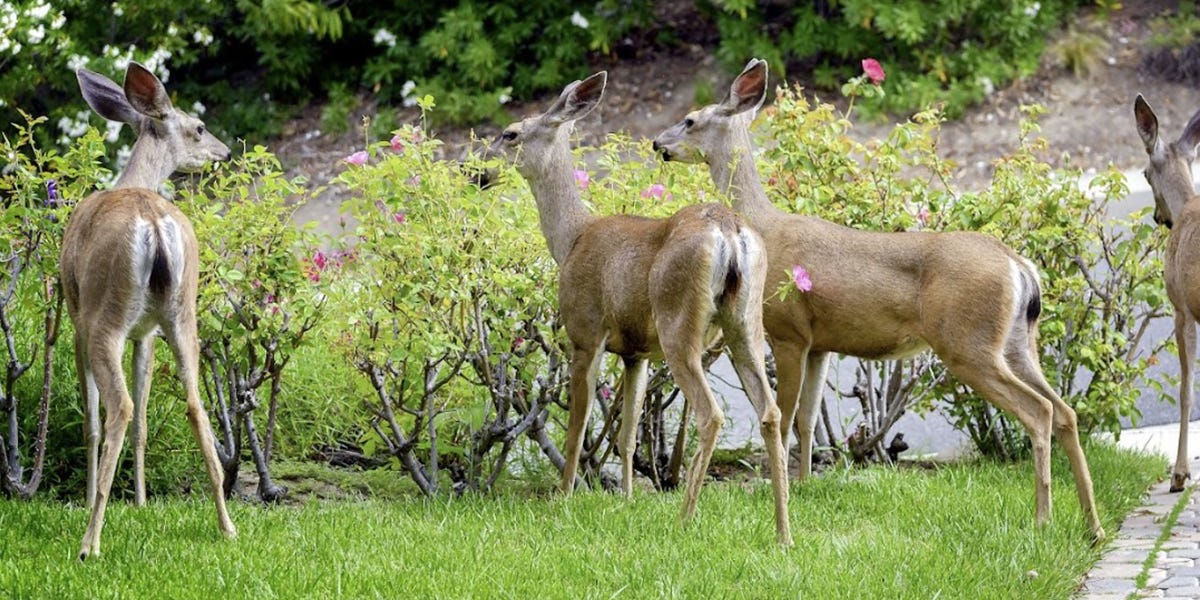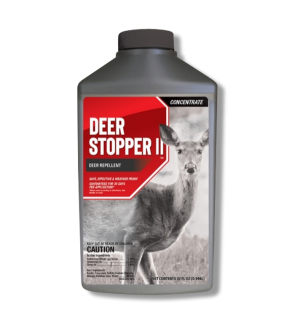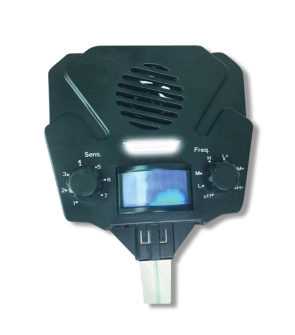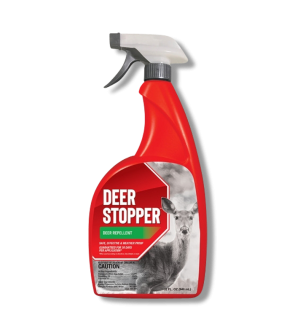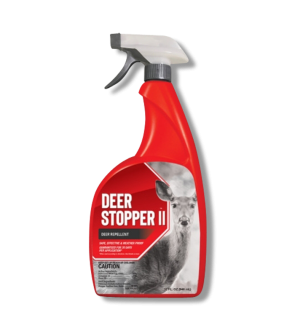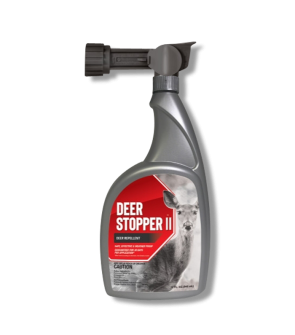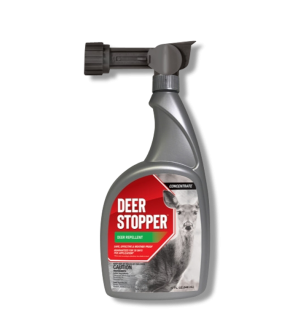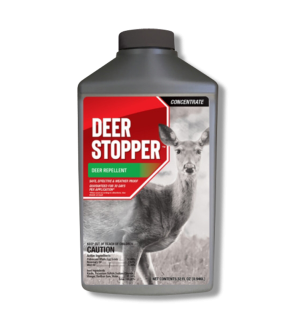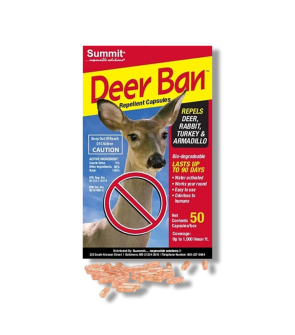Deer Control
Most Effective Products
Deer Control: How to Get Rid of Deer
This DIY article contains information and suggestions to help decrease the appearance of deer on your property. Follow this guide and use the recommended products and we guarantee 100% control of deers. When following these guidelines, State and local laws are still present and must be followed. It would be best for homeowners to visit with their local animal control office or state website to visit proper rules and regulations associated with the control of deers.
Witnessing deer in your property can be a beautiful sight to see until you realize they are enjoying your ornamental foliage and plants. Normally, deer are very docile or shy and will visit your property when they cannot smell or see you. Once deer have realized your presence they will scatter back into tree or bushlines. However, once deer have deemed your property as a veritable food source then most likely they will return.
Many homeowners often think that the activity and development in suburban neighborhoods would deter wildlife like deer. However, this could be farther from the truth as your lawn provides a reliable year-long food source with few natural predators. As animals that depend on their sense of smell, deer will come into your property when they catch the aroma of fertilized plants and bloomed foliage.
Deer are social animals that will often live in herds of 5 deer or sometimes more. From low to large numbers, deer can cause an extensive amount of damage within your land. Other than property damage, deer are carriers of ticks and can transfer tick-related diseases to people such as Lyme disease. In addition to tick related diseases, deer herds can become infected with other diseases or bacteria that can harm domestic animals such as horses, cattle, or sheep.
By taking a early initiative you can help to quickly control the deer population within your property. By following our DIY guide you can find expert techniques and professional-quality products to use to get rid of the infestation quickly and affordably.
Identification

Before treatment, you will want to determine if the damage and activity on your property was done by a deer. There is a variety of different species of deer, each one with their own specific features and traits. Throughout this article, we will focus on white-tailed deer as they are most commonly seen deer within the United States.
- The fur coloration of adult male or female deer will be reddish-brown during the spring and summer. Newly born deer, which are called fawns, will be reddish-brown with several hundred white spots. After 3 to 4 months of age, the fawns spotted coloration will be replaced by a brownish-gray fur color. During the fall and winter months, adult male and female deer will have brownish-gray fur color. From their neck, underside of stomach, in-between their thighs and legs, and underside of tail is white.
- Depending on the environment and food sources available, adult female deers will weight between 90 to 211 pounds. Male deers can weight between 150 to 300 pounds. From nose to tail, deer will measure from 5 to 6 feet in length.
- Male deer often known as bucks will have antlers whereas female deer will not. Typically in the late spring, male deer will shed their antlers to regrow a new pair for the upcoming breeding season. During this time, the antlers will be covered with a velvet-like material and when this falls off the deer will have a new set of antlers. Often male deer will rub their velvet covered antlers against trees, small woody shrubs, or even tall grass.
- Deer bodies are often slender and lanky with long thin legs. Older male deer will often have thicker shoulders or chest than female deers. Whether young or old, deer will have two black split hooves.
- White-tailed deer are crepuscular, meaning they are most active when the sun is just about to go down or rise. However, they are known to travel during normal daylight hours.
- Deer damage will normally be seen at an eye-level and even above if they stood on their hind legs to reach tree and brush leaves. They will tear or tug leaves or flowers off the branches and stems of plants. You will witness sporadic empty spaces within your ornamental foliage and brush. Leaves of plants and turf will be partially eaten off with jagged edges from tugging activity.
- Areas where deer have been active will contain large oval-shaped pellets that range between the colors black and brown.
Inspection

Once you have confirmed your pest and its activity to be deer, you can proceed to the inspection phase. Discovering where the deer is most frequently visiting will help to determine where to apply your products and avoid unnecessary application. As a result, you help to decrease wasted products and cost.
Where to Inspect
Deer are crepuscular pests that can feed on warm-seasoned or cool-seasoned turf within your property throughout the year. During a duration of the day, deer will settle under tree lines, tall grass, and within brushes or shrubs. From early morning to late evening, they can be seen grazing along the edges of your property, bushlines, edges of tree leaves, crop fields, and sometimes in the middle of grassy areas if they suspect no immediate danger.
What to Look For
Deer are very shy creatures that will normally scatter at the first sound, smell, or sight of people or animals. This makes physical identification a challenge, but nonetheless you can witness signs of their feeding activity by inspecting areas where there are gaps within shrubs and trees.
While deer can feed on your turf, they will normally eat the foliage off of trees and shrubs. Damage caused by deer can be seen by jagged or torn look on leaves, stems, and twigs since they tug at their food to feed. They will also stand on their hind legs to reach leaves on trees as high as 6 feet. Male deer will debark trees by rubbing their antlers against tree trunks to claim their territory or shed the velvet off their antlers.
The easiest sign of deer activity is to witness brown to black oval-shaped pellets near sights of deer activity or sometimes in the middle or along the edges of yards.
Treatment
Once you have confirmed deer activity, it is time to begin treatment. Remember to read all the directions on the product label and refer to your local state guidelines before implementing the following products.
To begin treatment for deer control within your property, we recommend wearing the appropriate personal protective equipment (PPE) that will protect your face, eyes, mouth, hands, feet, and skin. It is illegal in most states to capture or entrap deer so if you have one caught in your fencing or not moving within your property then consult with your local animal control office.
Step 1: Secure Yard with Tall Fencing

Fencing around your property, crops, and ornamental foliage is the most effective long-term solution to deers.
White-tailed deer are capable of jumping heights of 8 feet, so fencing above this height would be recommended. Typically, any form of fencing materials such as chicken coop wiring would do for most deer infestations. In most circumstances they will go underneath the fencing to reach crops and foliage.
For this reason, the spacing between the fence wires should be no more than 2 inches a part or have any gaps. Again, this may be specified in your state as measurements could vary.
Step 2: Deter with Repellents (Odors)

White-tailed deer rely on taste and smell to determine if foliage is edible, which is why repellents applied around plants and other desired foliage will deter deer after the first encounter.
Our recommended product is Deer Stopper Repellent Concentrate, a non-toxic concentrate product that can trigger a fear-based response to the deer. Deer Stopper Repellent Concentrate is made out of putrescent whole egg solids 14.46%, rosemary oil 2.04%, and cornmint oil 1.36% which is often associated with death to a deer.
You may apply Deer Stopper Repellent Concentrate with a handheld pump sprayer, backpack sprayer, or garden sprayer. Spray with your tool of choice at one part concentrate with nine parts water to make 2.5 gallons of ready to use material.
Deer are most active during the fall and winter season as food is becoming scarce. To prevent deer infestations, treat your property continually once 30 days have passed after first application or prior to the fall and winter season.
Prevention

After the deer activity has ceased, you will want to ensure that they will not return to your property. Implement the following preventative measures to make sure that deers will not continually feast on your foliage.
- Building fencing that is at least 8 feet high, and has gaps no larger than 2 inches will work best. You may use various type of fencing material around crops, fruits, ornamental foliage, and trees to prevent deer from coming close to these areas.
- Continually monitor fence lines and repair any damaged wiring so they cannot be entry points for deer.
- Mow your turf when it reaches a height of 3 or 4 inches to deter deer from feasting on your foliage.
Key Takeaways
When are Deer Active?
- Deer are crepuscular pests that come out just as the sun rises and sets. They are known to walk around your property during the day if there is no immediate danger. Typically, deer are most active during the fall and winter season due to shortage of food.
How to Remove Deer From Yard?
- Repellents such as Deer Stopper Repellent Concentrate is the best and safest way to remove deer from your property. Apply this product to non-edible plants and gardens, shrubs, flowers, trees, tree trunks, dormant fruit trees, and dormant nut trees
How to Protect Your Yard From Deer?
- Application of Deer Stopper Repellent Concentrate prior to the fall and winter season is the best preventative measure for deer. Clearing your yard of overgrowth of foliage and turf by mowing and building 8 feet tall fencing will help to protect your yard and plants from deer.
